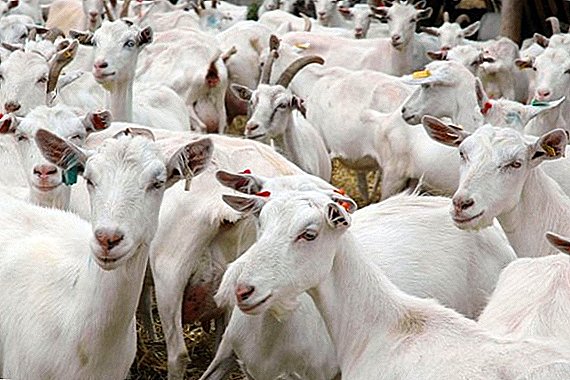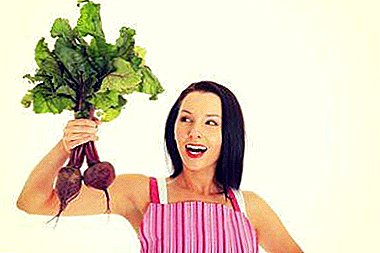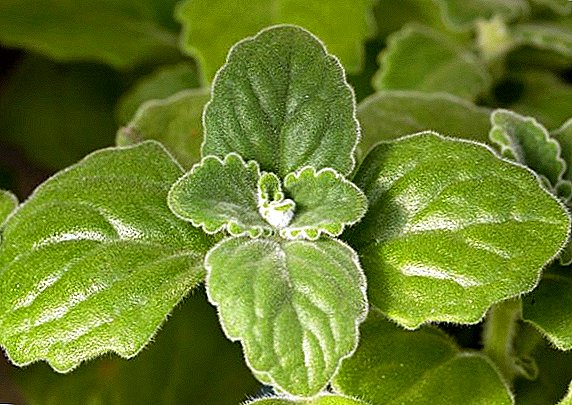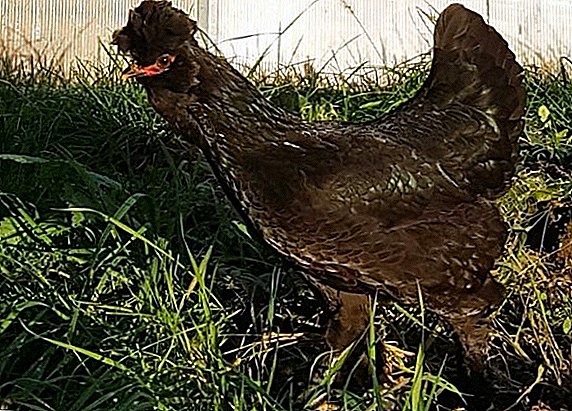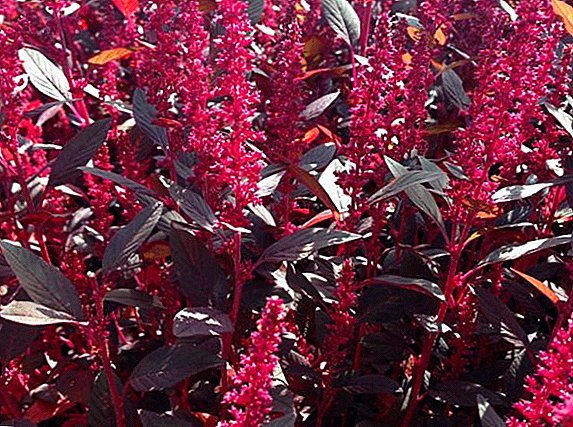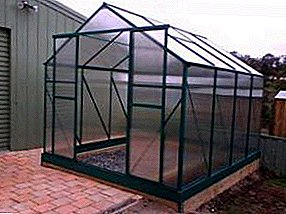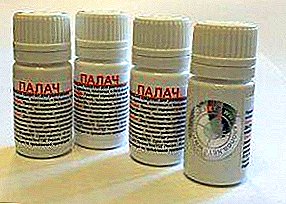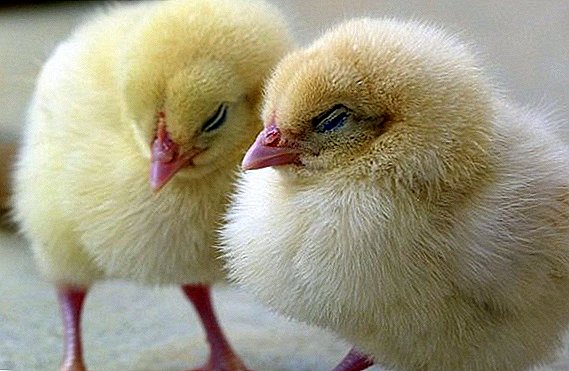 When breeding highly productive breeds of poultry, many farmers face quite serious problems, including all sorts of pathologies and disturbances in the operation of the avian organism. One of the most common among them is the fall on the paws of young chickens. The phenomenon has serious consequences for the young, as the rapid weakening of the body can cause the death of the entire brood.
When breeding highly productive breeds of poultry, many farmers face quite serious problems, including all sorts of pathologies and disturbances in the operation of the avian organism. One of the most common among them is the fall on the paws of young chickens. The phenomenon has serious consequences for the young, as the rapid weakening of the body can cause the death of the entire brood.
At the time when experienced poultry farmers discovered for themselves many methods of dealing with this pathology, for most inexperienced farmers this problem becomes a real threat to successful poultry farming. In this article we will take a closer look at the main causes of chickens' deaths, as well as get acquainted with the most effective ways to combat pathology.
Main causes of chickens
As mentioned above, many farmers face the problem of pathological weakness of chickens. This causes not only the deterioration of the growth of chicks, but also can lead to their early death. Today, the veterinary practice knows many of the causes of this syndrome, but among them the most common are only a few. Often, they are associated with fairly serious violations of the general rules for keeping poultry, such as unhealthy diets and non-observance of the sanitary state of the hen house.
Bad feed
Poor food almost always becomes the cause of all kinds of disturbances in the development of valuable breeds of farm animals. No exception and productive species of poultry. In pursuit of lowering the cost of keeping young stock and increasing the profitability of the poultry industry, many have resorted to buying cheap but poor feed.  As a result, chickens do not receive the required amount of nutrients and, most importantly, important vitamins and minerals. This is the reason for the lag in the development of individual organs and systems, as well as disruption of the activity of the digestive system, which causes refusal of food, weakness in limbs, etc.
As a result, chickens do not receive the required amount of nutrients and, most importantly, important vitamins and minerals. This is the reason for the lag in the development of individual organs and systems, as well as disruption of the activity of the digestive system, which causes refusal of food, weakness in limbs, etc.
Find out what products can be given to chickens.
A sharp disturbance in the activity of the musculoskeletal system and other systems is caused by a lack of vitamin A, E and calcium in the diet of young animals. The absence in the diet of these elements and causes weakness in the limbs, and also leads to their fragility and general destruction of bone tissue.
Since the overall picture of the disease looks rather blurry and ambiguous, it is not easy to determine the quality of the feed without thorough laboratory research.  However, it is possible to identify a vitamin deficiency by a characteristic reduction in the overall weight of the young, a decrease in activity, the appearance of apathy, loss of appetite, incoordination of movement, including the case of paws.
However, it is possible to identify a vitamin deficiency by a characteristic reduction in the overall weight of the young, a decrease in activity, the appearance of apathy, loss of appetite, incoordination of movement, including the case of paws.
Important! High-quality feed for chickens must necessarily contain vitamins A, B, D, E, a high percentage of carbohydrates and proteins, and also have a soft and light structure.
Malnutrition
The body of poultry, as well as other members of the animal world, at certain stages of development requires a diverse amount of useful vitamins, minerals and other substances. Unbalanced nutrition and the prevalence of dry food in the diet can cause a deficiency of important vitamins, which often leads to many violations of the body of young animals, including problems with limbs. Most often, malnutrition causes:
- Rickets. It appears due to a deficiency in the body of cholecalciferols, which arises due to a lack of calcium and phosphorus salts in the diet. The disease causes a metabolic disorder, as well as problems with the functioning of the musculoskeletal system. The main symptoms of rickets appear gradually. First, the chickens sharply decrease appetite, weakness, ruffled feathering, apathy, coordination of movement is disturbed, and the strength in the limbs weakens.
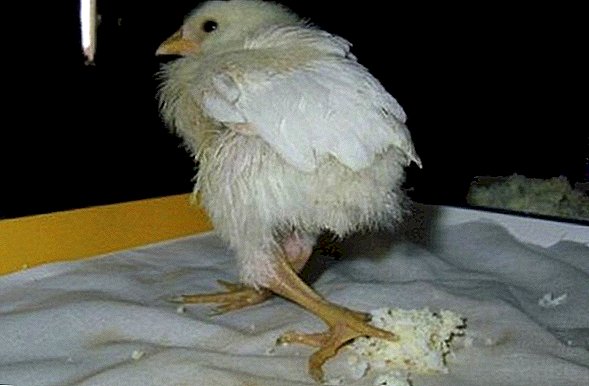 When this occurs, the leaching of calcium from the skeletal system, which is often identified by the characteristic pathological softening of the beak (palpation). In the neglected case, rickets leads to complete immobilization, loss of strength and death of chickens.
When this occurs, the leaching of calcium from the skeletal system, which is often identified by the characteristic pathological softening of the beak (palpation). In the neglected case, rickets leads to complete immobilization, loss of strength and death of chickens. - Arthritis. This is a complex inflammatory disease that causes damage to the joints and surrounding tissues. Appears due to an acute deficiency of vitamins in the diet. With arthritis, the bird reluctantly stands on one of the paws or both limbs, and also moves with difficulty across the territory of the chicken coop; upon a detailed examination of the joints, one can see their characteristic redness and local increase in body temperature in the area of the ailment.
- Tendovaginitis. This is a joint disease that causes inflammation of the tendons in a bird. Like arthritis, the disease is a consequence of a general deficiency in the body of vitamins and manifests inflammation in the joints, redness, local fever and loss of appetite.
- Perozis. This disease is a consequence of a lack of vitamin D in the hens ’diet, due to which there is an unnatural turning of the legs, which results in the complete loss of motor ability. Perosis almost does not respond to treatment, so these chickens die within a few weeks.
- Stomach blockage. It arises as a result of ingestion of indigestible grains in the digestive system. Often they are all kinds of grain particles (spines and grain shells, straw), as well as other pollutants (sawdust, small rods). The blockage can also be caused by feeding the young with raw grain, food with a high gluten content, and also because of the use of dirty water for drinking purposes of poultry. The symptomatology of the pathology is quite characteristic: the chickens are rapidly losing their appetite, convulsively moving, there is a general depression of their condition, as well as a complete absence of defecation and tension in the area of the anus. This causes a rapid intoxication of the body and the rapid death of young.

Important! If the intestine is blocked, the bird dies within 48 hours; therefore, when the first symptoms of the disease are detected, you should immediately contact an experienced veterinarian.
Improper chick conditions
Failure to comply with the general requirements for the poultry housing conditions is an additional condition for the development of chickens with the syndrome of paws, which can lead to more serious injuries of the body against the background of a general deficiency of important vitamins. Most often, farmers neglect the following requirements for poultry housing conditions:
- Lack of lighting - It causes vitamin D deficiency in the body of young animals. A decrease in this vitamin in the body is one of the main causes of rickets, which is manifested by the destruction of the skeletal system. As mentioned above, rickets causes loss of appetite, weakness, ruffled plumage, apathy, incoordination, soft beak syndrome, and also in advanced cases leads to the death of chicks.
- Low temperature and excessive moisture in the chicken coop - are the main cause of the development of all kinds of musculoskeletal ailments (arthritis, tendovaginitis, etc.), which lead to inflammation of the joints and surrounding tissues, causing reddening of the joints, damage to their motor abilities, local fever and general depression of the condition, including loss of appetite.
- Rare walking and glut coop - lead to reduced chick mobility. In the end result, this leads to dystrophy of muscle tissue, joints and depression of the general state of the body, including a sharp loss of appetite, as well as motor function.
- Non-compliance with general hygiene in the hen house - leads to the development of a variety of infections, as well as the accumulation of various garbage in the poultry housing, which can damage the tender legs of the chicks. Active infectious agents rapidly damage the damaged integuments of the young, which often causes their painful lameness and death in just a few days.

 To avoid the development of various infections, it is worth maintaining hygiene in the hen house
To avoid the development of various infections, it is worth maintaining hygiene in the hen houseInfection
Today, there are a diverse number of pathogenic strains that inhibit the growth and development of chickens, but the most dangerous among them are infections that cause mixed effects on different organs and systems. The most common among them are: pullorosis, escherichiosis, ornithosis and coccidiosis. Consider the main symptoms of ailments, as well as the most effective ways to deal with them.
Pullorosis
Pullorosis is a dangerous infectious disease that causes damage to the intestines, as well as organs with parenchymal tissue structure. The disease spreads instantly, while there is an acute damage to the body. The main cause of the disease is the sporiform bacterium Salmonella pullorum-gallinarum, which instantly affects the young and fragile organism of chickens due to non-compliance with the general sanitary standards for their content. 
Did you know? Pulloraz pathogen was first isolated and systematized in 1990 in the United States, thanks to the American scientist L. Reiter.The main symptoms of the disease:
- fever, while there are lethargy, apathy, drowsiness and refusal of food;
- redness of the mucous membranes;
- filling the nasal cavity and mouth with viscous mucus with an unpleasant odor;
- ruffled feathers;
- diarrhea, which is detected due to abundant contamination by feces of the back of the body;
- incoordination of movement (fall on the paws);
- labored breathing.
It is not easy to overcome the disease, since the treatment is often ineffective, therefore, when a diagnosis is established, the affected chicks are killed and disposed of. At the same time, a conditionally healthy bird is subjected to preventive treatment. To do this, use complex antibiotic drugs with a wide range of effects.
The most popular among them are "Kolmik-E" and "Furazolidone". Means administered orally, in a mixture with drinking water. The dosage "Kolmika-E" is 0.5 ml / 1 l of water per day, "Furazolidone" - not more than 3 g / 1 kg of bird weight per day.  Feeding of young animals with drugs is carried out for 5-7 days, after which, if necessary, the therapy is repeated after 10-14 days. The main measures to prevent pullorosis are compliance with the general rules of zoohygiene, as well as regular preventive disinfection of the coop.
Feeding of young animals with drugs is carried out for 5-7 days, after which, if necessary, the therapy is repeated after 10-14 days. The main measures to prevent pullorosis are compliance with the general rules of zoohygiene, as well as regular preventive disinfection of the coop.
Escherichiosis
Escherichiosis is an acute intestinal infection, which is caused by various strains of Escherichia coli (Escherichia coli), as well as other related bacteria of the genus Escherichia. The illness is a consequence of non-observance of the general sanitary standards at cultivation of a bird, and also arises owing to the use of the polluted food or water. Chickens with this disease are observed acute attacks of enteritis and enterocolitis.
The main symptoms of the disease:
- lethargy chickens;
- refusal of food;
- dehydration;
- persistent diarrhea;
- fever;
- ruffled feathers;
- inflammation and purulent discharge in the area of the mucous membranes of the eyes;
- impaired coordination of movement due to the occurrence of serofibrinous arthritis (depressions on the feet).
 To prevent infection, thorough cleaning of the chicken coop from faeces is recommended, as well as periodic irrigation (1 time in 2 weeks) of the room air with a 1% Dioxidine solution, with 1 ml of the active substance per 1 cu. m coop.
To prevent infection, thorough cleaning of the chicken coop from faeces is recommended, as well as periodic irrigation (1 time in 2 weeks) of the room air with a 1% Dioxidine solution, with 1 ml of the active substance per 1 cu. m coop.Did you know? The bacterium Escherichia coli was first discovered and described in 1885, thanks to the efforts of the German bacteriologist and physician Theodor Escherich, after whom it was named.
Ornithosis
Ornithosis is an acute infectious disease caused by various strains of microscopic intracellular parasites belonging to the species of bacteria Chlamydophila psittaci. The infection is spread by airborne droplets from infected wild or domestic birds. The causative agent of the disease actively affects the respiratory system of the bird, which causes its spread through the circulatory system and throughout the body, often causing severe intoxication of organs and body systems. With late treatment ornithosis leads to the imminent death of young.
The main symptoms of the disease:
- ruffled plumage;
- lethargy and drowsiness of chickens;
- loss of appetite;
- incoordination of movements (fall on the paws);
- labored breathing;
- inflammation of the mucous membrane of the eyes;
- the appearance of purulent discharge from the nose and eyes;
- diarrhea with a characteristic greenish color of feces (can sometimes change for severe constipation).
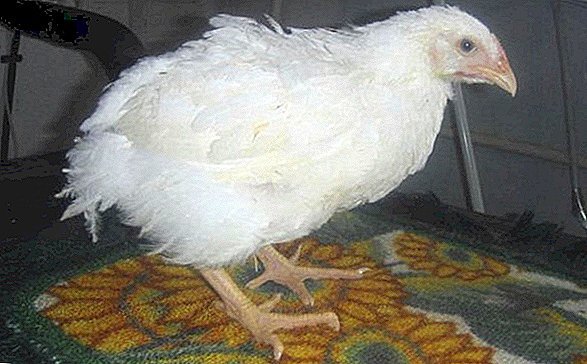 They fight ornithosis in chickens using Tetracycline (40 mg / 1 kg of body weight per day), Erythromycin (40-50 mg / 1 kg of body weight per day) or interchangeable analogues. The drugs are administered orally, with drinking water or food. The general course of therapy lasts for 10-14 days, after which the affected individuals are carefully examined again for the presence of bacteria. To prevent infection, chicks are injected with an anti-rhinitis vaccine, three times, with an interval of 5-7 days.
They fight ornithosis in chickens using Tetracycline (40 mg / 1 kg of body weight per day), Erythromycin (40-50 mg / 1 kg of body weight per day) or interchangeable analogues. The drugs are administered orally, with drinking water or food. The general course of therapy lasts for 10-14 days, after which the affected individuals are carefully examined again for the presence of bacteria. To prevent infection, chicks are injected with an anti-rhinitis vaccine, three times, with an interval of 5-7 days.
Important! The causative agents of ornithosis can cause damage to the human body, therefore, work with a sick bird should be carried out exclusively in protective gear, as well as a quality respirator.
Coccidiosis
Coccidiosis is caused by a unicellular parasite from the subclass Coccidiasina. Infection of the bird's body occurs by consuming water or food contaminated with oocyst parasite. The microorganism destroys the mucous membranes of chickens, and also reduces their overall immunity, which leads to the defeat of young animals by other infections. The disease is acute and most often occurs in spring and summer.
The main symptoms of the disease:
- loss of appetite in chickens;
- apathy;
- ruffled feathers;
- increased thirst;
- diarrhea with a characteristic mucous consistency of dung and yellowish patches;
- incoordination of movements (fall on feet).
 For the treatment of coccidiosis, general veterinary practice involves the use of a variety of tools aimed at suppressing the parasite's vital activity. Such funds are administered orally with food. The most popular among them are "Avatek 15%" (0.5 kg / 1 ton of feed), "Zoalen" (0.5 kg / 1 ton of feed), "Koyden 25%" (0.5 kg / 1 ton of feed) , "Coccidin" (2.5 kg / 1 ton of feed).
For the treatment of coccidiosis, general veterinary practice involves the use of a variety of tools aimed at suppressing the parasite's vital activity. Such funds are administered orally with food. The most popular among them are "Avatek 15%" (0.5 kg / 1 ton of feed), "Zoalen" (0.5 kg / 1 ton of feed), "Koyden 25%" (0.5 kg / 1 ton of feed) , "Coccidin" (2.5 kg / 1 ton of feed).
Learn more about the first symptoms and treatment of coccidiosis in chickens.
The drugs are administered for 7-10 days, after which, if necessary, the therapy is repeated. To prevent the development of coccidiosis, one should strictly adhere to the general rules of livestock breeding of poultry, and periodically process the chicken coop with 3% formalin solution, copper sulphate or 4% cresol solution.
Chickens die: how to prevent and what to do
Often, the main cause of the disease of chickens is revealed at the very peak of its development, which certainly leads to significant losses for the farm due to the death of the young. That is why all sorts of preventive measures to prevent diseases of chickens are one of the most effective methods of saving not only money, but also the general health of the population. For these purposes, a diverse number of methods and techniques have been created, therefore, in the following we analyze in detail the most effective among them. 
Rules for feeding and feeding chicks
The basis of good health and resistance of the body of chickens to all sorts of ailments is a balanced diet. Only in this case will it be possible to provide the poultry organism with the necessary elements that are the basis of a healthy life for chickens throughout their lives. A proper and balanced diet for chickens must consist of the following products:
- Boiled egg. It is one of the main components of the diet of young chickens, especially in the first 2 weeks of life. This product contains almost everything necessary for the full growth and development of substances. In the first two weeks of life, the egg should occupy at least 40% of the total mass of food, then it is gradually removed from the diet.
- Greenery. It is one of the main sources of vitamins and important minerals, therefore, unlike other products, it should be given to chickens throughout their lives, from the first days. As a feed for chickens, any herbal plants are suitable, but fresh dandelion, nettle, clover, green onions, sorrel and wood lice are particularly useful.
- Cereals. They supply the body of chickens with essential minerals and carbohydrates, contributing to the rapid growth and collection of the necessary mass of livestock. Include cereals in the diet of chickens from the first days of life. For these purposes, almost any croup, corresponding to high quality, is suitable. Cereals can be replaced with special feeds, however, such a product is introduced into the diet only after chicks are accustomed to grain.
- Sour milk products. Помогает снабдить цыплят необходимым количеством кальция и белка, а также обеспечить кишечник правильной и здоровой микрофлорой. Fermented milk products give chickens from the first days of life, while fresh low-fat cottage cheese or low-fat kefir is best suited for this purpose. Apply them as food both in pure form and as part of various mixtures.
- Vegetables. Together with greens are the main source of vitamins and important minerals. Any variety of vegetables is suitable as food, but potatoes, pumpkin, zucchini, beets and carrots are most often used. Vegetables are included in the diet of birds from 1-2 weeks, while in order to avoid disorders of the gastrointestinal activity, the first few weeks, vegetables are given exclusively in boiled form.
- Vitamin supplements. They play the role of an additional source of minerals and other useful substances. Often for this, already from 3-4 weeks of age, chickens are given germinated grain (the main source of vitamin E), baker's yeast (the main source of vitamin B), chalk and limestone (the main sources of calcium). You can replace them with complex vitamins, which can be purchased at almost any veterinary pharmacy.


Read about how to feed the chickens in the first days of life.
The main secrets of the correct feeding of chickens:
- It is not recommended to feed newborn chickens immediately, so the first feeding should be carried out not earlier than 16 hours after their hatching;
- in the first 1.5-2 weeks of life, chicks should be fed at least 8 times a day, for this they should be provided with an unlimited amount of feed;
- from the age of 15 days, the chicks are transferred to 6 meals a day, and after they reach the age of 3 months, feeding is carried out no more than 3-4 times a day;
- evening feeding of chickens should be the most abundant and high-calorie, it will help speed up the growth and weight gain of young animals;
- The break between feeding chickens should not exceed 8 hours, so evening feeding is carried out not earlier than 20.00, and the morning one - with the first rays of the sun.

Content Features
Typically, domestic hens and broilers do not differ whimsical to living conditions, so you can keep them in almost any conditions and premises. However, when mass poultry rearing must follow the general rules of growing chickens. During the breeding of commercially valuable breeds, breeders often rely solely on their productivity, neglecting the development of natural resistance to all sorts of ailments. This is the main reason for the sharp reaction of the bird to changes in habitat conditions.
For further breeding of newborn chicks, we recommend building a brooder.
The room in which the young are grown should be warm, bright and spacious. At the same time, the chicken coop must be moderately moistened, well protected from drafts, but well ventilated. The optimal condition is relative humidity of air within 60%. It is also worth taking the temperature responsibly. Newborn chickens need enough heat, but they should not be overheated, as this will adversely affect their health. To this end, the temperature in the chicken coop is gradually and smoothly reduced over 2 months.
The most acceptable temperature regimes for young stock are the following ranges:
- about +35 ° C - for 1-2 day old chicks;
- about +33 ° C - for 3-5 day old chicks;
- about +31 ° C - for 5-8 day old chicks;
- about +28 ° С - for chickens at the age of 15-22 days;
- about +26 ° C - for chickens aged 23-35 days;
- about +23 ° C - for chickens aged 40-55 days;
- about + 18-21 ° С - for chickens over 60 days old and adult chickens.
 Brooder chickens maintenance One of the main conditions for proper chick keeping is the optimal daylight mode. Newborn chicks during the first few days need to be lit around the clock. When they reach the age of 5-7 days, the length of daylight hours in the coop can be smoothly reduced to 20 hours. When the chickens have reached the age of 1.5-2 months, artificial lighting can be gradually eliminated, while the duration of the daylight hours of the chicks should not be less than 8-10 hours.
Brooder chickens maintenance One of the main conditions for proper chick keeping is the optimal daylight mode. Newborn chicks during the first few days need to be lit around the clock. When they reach the age of 5-7 days, the length of daylight hours in the coop can be smoothly reduced to 20 hours. When the chickens have reached the age of 1.5-2 months, artificial lighting can be gradually eliminated, while the duration of the daylight hours of the chicks should not be less than 8-10 hours.
To prevent the development of pathologies of the musculoskeletal system, it is necessary to provide the young animals with the necessary physical exercise. To do this, starting with two months, they must be walked in the fresh air (subject to optimal weather conditions). With the same purpose it is not recommended to keep an excessive number of individuals in the same space. For this number of chickens per 1 square. m gradually reduced: from 30-35 newborns to 6 chicks at the age of 1.5-2 months.
It is also necessary to take into account the optimal thickness of the litter.
Read about the features of fermentation litter for chickens.
If you plan to grow chickens in the summer, its layer should not exceed 5-8 cm, but in winter it is necessary to increase the thickness of the underlying material to 15 cm, otherwise the young growth can freeze and become sick. During the first 2 months, full bedding replacement is not recommended, therefore, to improve the sanitary condition, only the top layer of bedding is changed. 
Disease prevention
Quality prevention is one of the most effective ways to prevent any disease, including various pathologies of young chickens. That is why it is necessary to strictly observe all sanitary rules for growing poultry. In order to protect chickens from a variety of diseases, you should definitely:
- before the birth of young animals, to sanitize the coop with the preparations "Glutex", "Virocid" or their analogues;
- provide young animals with the necessary conditions and microclimate, including the right diet (based on the above recommendations);
- avoid contact of chickens with adults or wild birds, for this they are grown in separate, well-protected premises;
- daily monitor the sanitary condition of drinking water, food and bedding;
- periodically check the health of the chicks;
- at the first suspicion of the development of dangerous ailments, move sick chickens to a separate room.
We advise you to learn how to disinfect the chicken coop at home.
In addition, as a preventive measure, the bird should be periodically fed with broad-spectrum antibacterial drugs. To do this, use "Ampicillin" (20 mg / 1 kg of body weight per day), "Cockidin" (1.25 kg / 1 ton of feed), "Koyden 25%" (0.5 kg / 1 ton of feed), "Levomitsetin" ( 30-40 mg / 1 kg of weight per day), "Furazolidone" (3 g / 1000 heads per day) or other interchangeable analogues.  Prophylactic administration of drugs is often carried out orally (with food or water, depending on the type of drug), in small courses lasting no more than 5 days each. Also important is the vaccination of chicks. At one day old, chickens are vaccinated against Hambor's disease, at 10-12 days against Newcastle's illness, and at the age of 20 days against bronchitis.
Prophylactic administration of drugs is often carried out orally (with food or water, depending on the type of drug), in small courses lasting no more than 5 days each. Also important is the vaccination of chicks. At one day old, chickens are vaccinated against Hambor's disease, at 10-12 days against Newcastle's illness, and at the age of 20 days against bronchitis.
Find out which broad-spectrum antibiotics can be given to chickens.
All sorts of diseases and the death of chickens are one of the main causes of losses in both industrial and domestic poultry breeding. At present, there are many high-quality drugs for instantly dealing with various pathologies, however, the most effective way to combat this problem is high-quality prevention of ailments. First of all, it consists in observing the general rules of zootechnics when raising poultry, as well as vaccination and the periodic introduction into the body of chickens of broad-spectrum antibacterial drugs.


 When this occurs, the leaching of calcium from the skeletal system, which is often identified by the characteristic pathological softening of the beak (palpation). In the neglected case, rickets leads to complete immobilization, loss of strength and death of chickens.
When this occurs, the leaching of calcium from the skeletal system, which is often identified by the characteristic pathological softening of the beak (palpation). In the neglected case, rickets leads to complete immobilization, loss of strength and death of chickens.